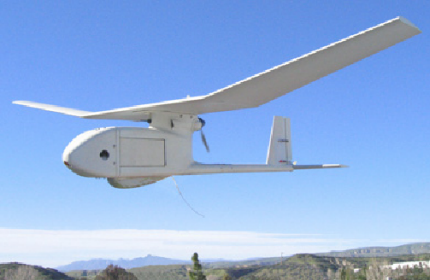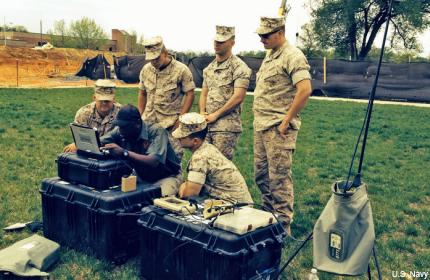UAS training to be basic training for Marine officers
The Basic School for new officers is adding a course on the RQ-11B Raven, a small, lightweight system that can provide ISR in the field.

Unmanned aerial systems are becoming so important to military operations that the Marine Corps is adding UAS training to its basic curriculum for new officers.
Thirteen instructors at The Basic School at the Marine Corps Base in Quantico, Va., recently took a two-week course on the RQ-11B Raven—past of the service’s Group 1 of small UAS—and will incorporate it into their curriculum, according to a Naval Air Systems Command release.
The Basic School (TBS) provides training to newly commissioned officers. And although its primary focus is on teaching them to lead an infantry platoon, its courses cover a broad swath of military knowledge, from martial arts and amphibious operations to military law and aviation support. It now also will include how to operate and maintain the Raven.
“By teaching and training this at the first school new Marine officers attend, they will take this knowledge and develop new tactics, techniques and procedures earlier on in their careers, helping the Group 1 UAS program grow within the Marine Corps,” said Maj. Justin Betz, TBS air officer.

TBS instructors get training on operating the Raven.
The training will include classroom work added to existing aviation courses plus field exercises with the 13 newly trained instructors. The Raven, along with the RQ-12A Wasp and RQ-20A Puma, make up Group 1 of NAVAIR’s Small Tactical Unmanned Aircraft Systems. They are back-packable, hand-launched systems that provide intelligence, surveillance, reconnaissance and target acquisition for warfighters on the ground, NAVAIR said. The RQ-11B Raven, also known as Raven B, weighs 4.7 pounds, with a 4.5-foot wingspan, a range of up to 10-kilometers and an operating altitude of 150 to 1,000 feet. According to AeroVironment, which makes the Raven, it’s the most commonly used UAS in the world.
To date, the Marines have generally used large unmanned systems for ISR, but Betz said the Corps anticipates the need for smaller systems that can be deployed by ground forces. “Instead of relying on the Marine Air Wings, which have traditionally provided ISR with larger-sized UAS, units can have in-house trained Marines that are mobile and still have the ability for airborne ISR.”
By training new officers in using Group 1 systems, ground forces will be better able to incorporate aerial elements into their missions. “We are taking TBS training to the next level through the use of unmanned ISR and encouraging student officers to include some basic aviation considerations into their mission planning,” said Maj. Peter Fukushima, section head for the Warfighting Marine Air-Ground Task Force (MAGTF) section head who is overseeing the training. “Through early exposure to a variety of aviation assets at TBS, the idea is to foster greater air-ground integration and enable students to be successful in the future.”
Training for the 13 TBS instructors was handled by a team from the Navy and Marine Corps Small Tactical Unmanned Aircraft Systems Training and Logistics Support Activity. The Raven training is to be incorporated into the TBS curriculum later this year.



